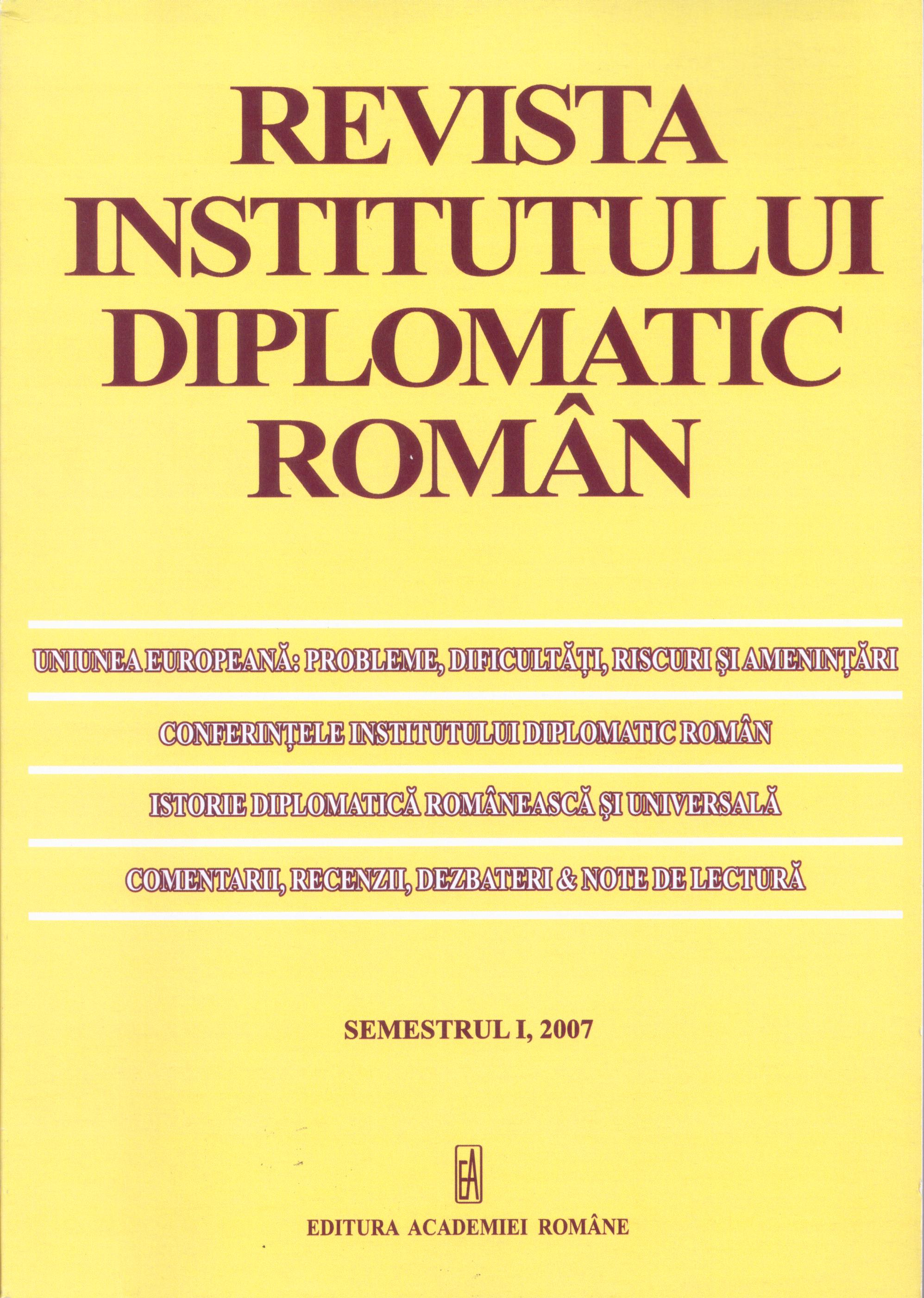Proiectele sovietice de organizare postbelică a Europei
Soviet Post-War Plans for Europe
Author(s): Laurenţiu ConstantiniuSubject(s): History, Recent History (1900 till today), Interwar Period (1920 - 1939)
Published by: Institutul Diplomatic Român
Summary/Abstract: The Soviet projects concerning post-war organization of Europe relayed on the fundamental principle to ensure the security of Soviet Union. From the moment when they took the power (1917) till the end of the communist regime, the new leaders of Russia were subject of a double feeling of insecurity. First it was an internal insecurity feeling. This feeling arose because the bolsheviks knew that they did not have a large social base. That is why they perceived the people as an enemy against it was necessary to fight to maintain him under a strong control. And for that the bolsheviks organized a extremely large and powerful institution for surveillance and repression. The second constitutive part of this insecurity feeling was external insecurity. The bolsheviks considered their country a fortress under siege. The Soviet leaders were obsessed by the „capitalist encirclement” ant for that reason they considered that is necessesary to protect the USSR against it. Recently in the Soviet\Russian archives were finded three project devoted to the post-war organization of Europe. They were written by Ivan M. Maiski, Andrei A. Gromyko and Maxim M. Litvinov. Maiski’s Plan was the most extensive and it was written on January 11, 1944. His author, was a career diplomat and served as ambassador of Soviet Union in Great Britain. In autumn 1943, the Soviet leaders recalled him and in a shrt period of time Maiski became one of the Molotov’s deputies minister and president of the International Comission for War Reparations. His document contains a deep analysis of the international context after World War II and also the step which has to be done by Soviet Union to protect its security interests. The second plan belongs to Andrei A. Gromyko, who was the ambassador of the Soviet Union in the United States, begining from 1943. His document contains an analyse of the foreign relations and the factors, which could influence affect them. That is why the United States and its foreign policy toward Western Europe was very deeply analised. Finaly, the Litvinov’s Plan represent a report concerning the activity of the Council of Foreign Ministers. Litvinov paid attention to three problems: Soviet-British relations, Soviet-American relations and the creation of the sphere of influences.
Journal: Revista Institutului Diplomatic Român
- Issue Year: I/2007
- Issue No: I
- Page Range: 201-219
- Page Count: 20
- Language: Romanian

